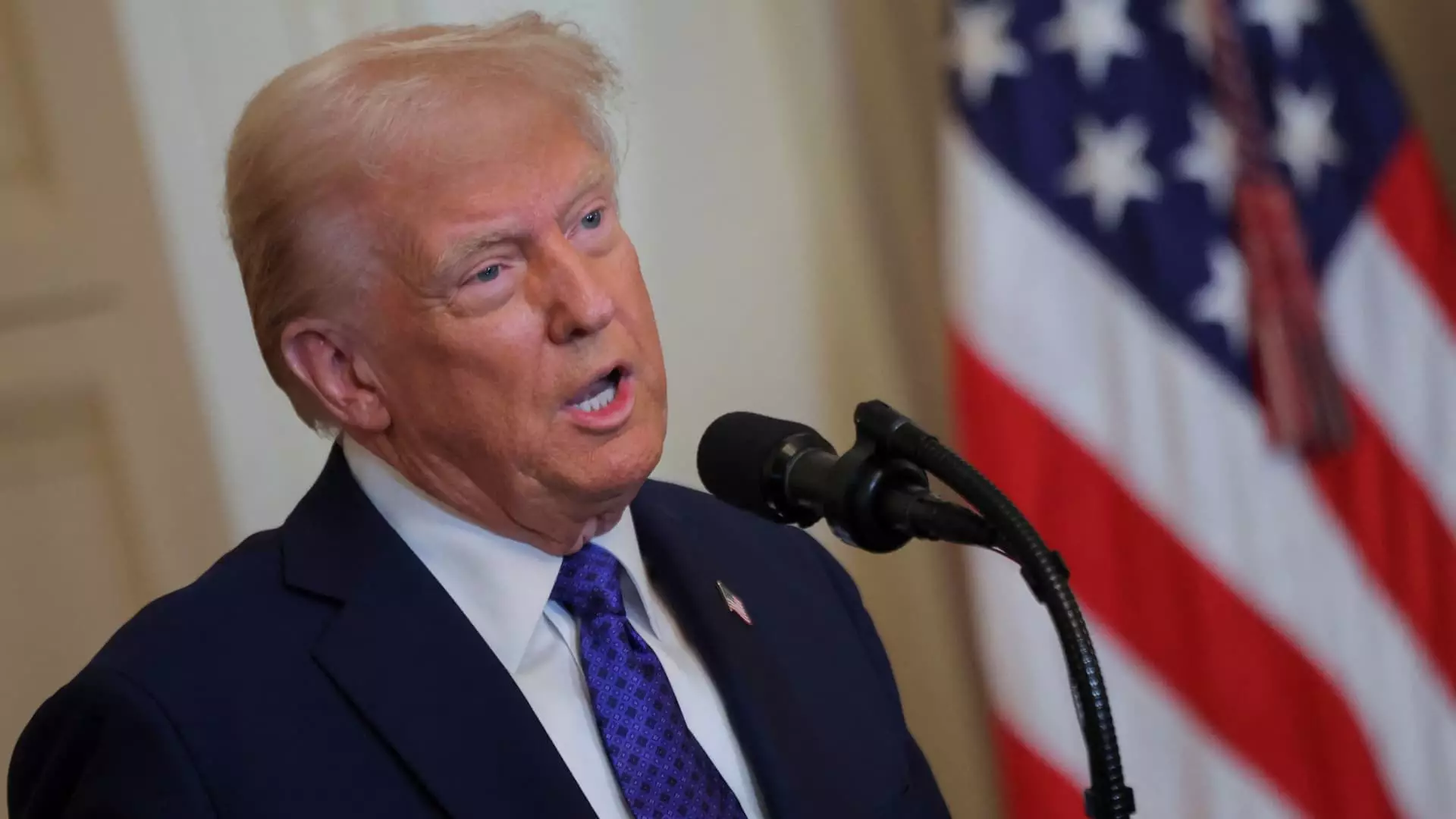The current economic landscape under the Trump administration has created a unique set of circumstances that may favor two distinctly different investment arenas: large financial institutions and small-cap stocks. The dual dynamics at play, driven by regulatory changes and economic policy shifts, have implications that investors should closely analyze and consider for their portfolios.
Leading financial analysts, such as John Davi from Astoria Portfolio Advisors, have indicated that the trend toward deregulation is poised to ignite significant growth within the banking sector. With expectations surrounding an increase in both initial public offerings (IPOs) and merger and acquisition activities, the fundamentals of large-cap banks have begun to resemble a compelling investment opportunity. In a recent discussion on CNBC’s “ETF Edge,” Davi noted that prior to the current administration’s policies, these institutions were already demonstrating promising earnings potential.
This positive trajectory is exemplified by the performance of major banks like Goldman Sachs, JPMorgan Chase, and Bank of America, whose stocks recently achieved all-time highs. Investors can look favorably upon ETFs such as the Invesco KBW Bank ETF, which has garnered a near 10% increase since the start of the year. This leading fund illustrates the bullish sentiment around the sector, showcasing the potential growth of its top holdings, which include some of the most established financial institutions in the U.S. market.
Conversely, the outlook for small-cap stocks under Trump’s policies appears equally optimistic, albeit stemming from different catalysts. VettaFi’s Todd Rosenbluth posits that small-cap companies, often less exposed to international markets, are likely to thrive amid a localized economic focus and potential reshoring initiatives. This demographic of stocks tends to capitalize on domestic manufacturing and serves as a buffer against tariff-induced disruptions.
Rosenbluth recommends several investment vehicles for exposure to this dynamic sector, including the T. Rowe Price Small-Mid Cap ETF and the Neuberger Berman Small-Mid Cap ETF, which target businesses positioned for growth within the United States. Another noteworthy fund, the VictoryShares Small Cap Free Cash Flow ETF, particularly emphasizes the importance of financial health alongside growth potential. With its focus on companies that exhibit robust free cash flow, this ETF can be appealing to risk-conscious investors looking for quality small-cap opportunities.
The notable performance of these ETFs contrasts with the greater Russell 2000 index, strengthening the case for small-cap investment strategies during a period of heightened economic volatility. While the Russell 2000 climbed approximately 17% over the last year, the VictoryShares Small Cap Free Cash Flow ETF maintained a robust growth rate of nearly 10%, highlighting the selective nature of profitable investments in this category.
Incorporating both large-cap banks and small-cap stocks into an investment portfolio may create an advantageous balance in the face of economic uncertainty. The historical performance of financial institutions amidst regulatory changes coupled with the resilience of small-cap firms offers investors a diversified approach to potential market volatility.
Investors must remain vigilant, analyzing macroeconomic indicators and legislative developments that could impact both segments. The interplay between these financial ecosystems underscores the unpredictability of market movements, yet also presents unique opportunities for those willing to adapt their strategies to align with emerging trends.
The current economic landscape under the Trump administration fosters favorable conditions for both large banks and small-cap stocks. By carefully considering the catalysts beyond mere stock performance—namely, deregulation, economic policy shifts, and emerging trends—investors can navigate this multifaceted environment to their advantage. Balancing investments across these sectors not only provides diversification but also positions investors to capitalize on potential growth in a rapidly changing economic climate.

